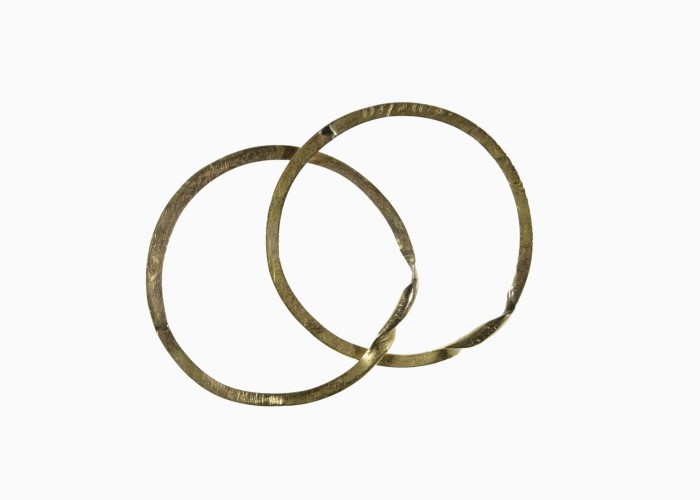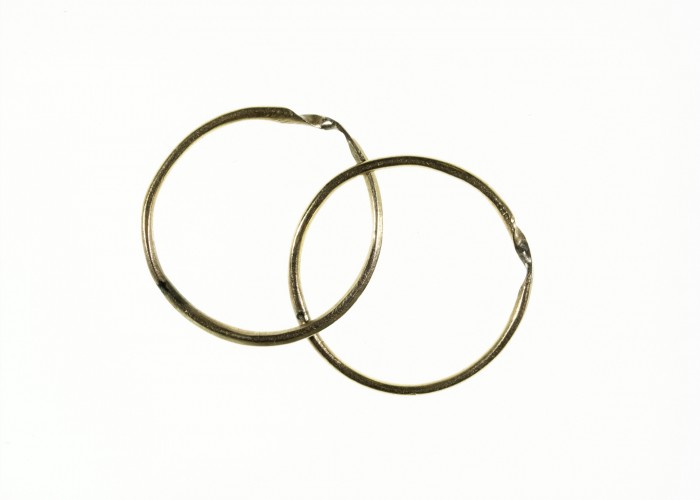Gold Interlocking Rings
Inscribed “Robert.Amelia”, these two interlocking rings together form a single ring. They belonged to Quartermaster Sergeant Robert Porter of the 28th (North Gloucestershire) Regiment, who fought at the Battle of Waterloo. Sergeant Porter claimed that after the Battle, he was unable to get a letter to his wife Amelia to let her know that he had survived. However, he was able to send this token of their affection, proving that he was well and still remembered her.
Family legend tells that after Waterloo a comrade of Sergeant Porter delivered the rings to Mrs Porter as proof of her husband’s survival, because correspondence from enlisted men (not officers) was forbidden. In fact, many letters did fly from Belgium to England after the battle. In any case, you might think the word of Sergeant Porter’s comrade would be proof enough. The ring is an intriguing and touching choice.
Sergeant Porter and the 28th were engaged at Quatre Bras on 16th June. They marched to the aid of the hard-pressed 42nd and 44th Regiments, forming square while under continuous attack from French cavalry. The regiment’s Major Llewellyn wrote: ”The rye in the field was so high, that to see anything beyond our own ranks was almost impossible. The Enemy, even, in attacking our Squares, were obliged to make a daring person desperately ride forwards and plant a flag, as a mark, at the very point of our bayonets. On this they charged, but were invariably repulsed.
“It fell to the 28th to bear a leading share in this Action, and they lost none of their former reputation. They were frequently hardly pressed, but never lost their discipline and their self-possession. Once, when threatened by what Sir Thomas Picton imagined an overwhelming force, he exclaimed, ‘28th, remember Egypt’. They cheered, gallantly beat back their assailants, and stood their position.” See an image of the 28th fighting at Quatre Bras here.
Two days later at Waterloo the 28th confirmed its steadiness, playing a part in defeating the attack of D’Erlon’s French 1st Corps. It was the only English Regiment mentioned by name in Wellington‘s Waterloo Dispatch.
The date that the rings were made is unknown, as they have no hallmark. The glass presentation case was probably made in 1815.
-
Curatorial info
- Originating Museum: National Army Museum
- Accession Number: NAM. 1969-07-39
- Material: Gold
-
Use this image
You can download and use the high resolution image for use in a non-profit environment such as a school or college, but please take note of the license type and rights holder information below
- Rights Holder: Copyright National Army Museum.
- License Type: All Rights Reserved
Find it here
This object is in the collection of National Army Museum










